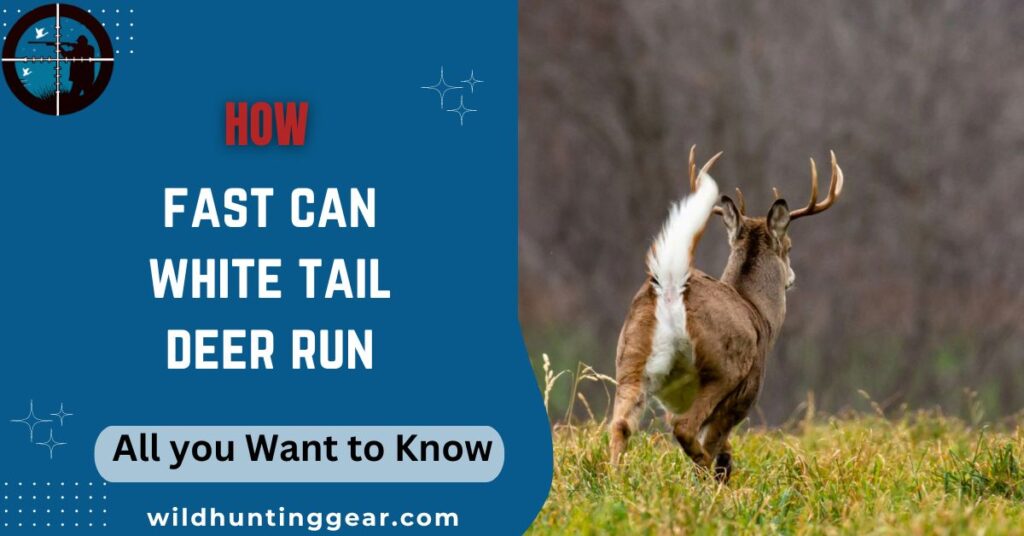Have you ever wondered about the incredible abilities of nature’s athletes? Among the most impressive runners in the wild is the elusive whitetail deer. From quick sprints to long-distance endurance, these animals have evolved with incredible speed and agility to navigate through their environment. In this article, we’ll delve into the mesmerizing world of whitetail deer and uncover their remarkable sprinting abilities.
What is a Whitetail Deer?
White tail deer, scientifically known as Odocoileus virginianus, are native to the Americas, encompassing a vast range from Canada down to South America. As their name suggests, these deer are easily identifiable by their white tails, which they raise as a warning signal to other deer when they perceive a threat.
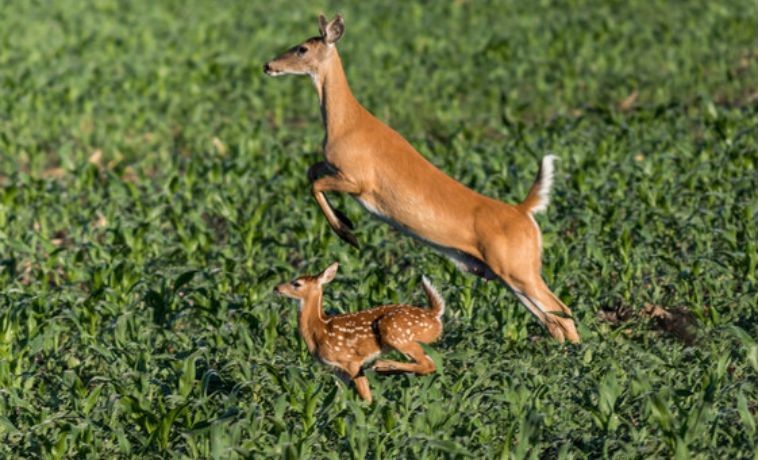
Anatomy and Physiology of Whitetail Deer
To fully appreciate their sprinting capabilities, it’s vital to understand the unique physical adaptations of whitetail deer. Their long legs and specialized hooves provide them with superior traction and stability on various terrains, while their lightweight build minimizes energy expenditure during sprinting. The deer’s musculature, bones and tendons work in harmony to enable powerful strides and impressively quick acceleration.
Related Article: Rangefinder for Deer Hunting
5 Factors Affecting Whitetail Deer Speed
- Terrain and Environment: The terrain plays a crucial role in determining a deer’s sprinting ability. In open areas with minimal obstacles and vegetation, they can reach their top speeds. However, dense forests or uneven terrain may slow them down considerably as they navigate their way through the environment.
- Age and Health: The age and health of a deer significantly influence its running capabilities. Young, healthy deer tend to have better endurance and can reach top speeds more consistently. Conversely, older, injured, or diseased deer may struggle to maintain their speed or have reduced overall agility.
- Predators and Hunting: Predator-prey dynamics also shape the whitetail deer’s speed. In the presence of predators, such as wolves, cougars and humans, deer often exhibit faster sprinting speeds due to the adrenaline rush and the heightened fight-or-flight response.
- Diet and Nutrition: A deer’s diet plays a key role in its running capability. An animal needs enough energy delivered through the right balance of macronutrients to be able to sprint effectively and whitetail deer can obtain this fuel from feed, grasses, shrubs and other vegetation.
- Training and Experience: Finally, a deer’s sprinting ability is also influenced by its training and experience. With time, deer learn how to effectively navigate their environment and avoid obstacles while running, making them more adept at reaching high speeds over short distances.
Average Speed Measurements of Whitetail Deer
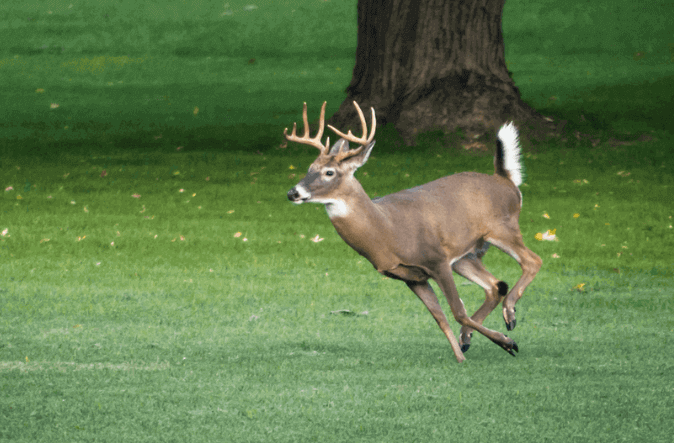
Research has provided several valuable insights into the sprinting ability of whitetail deer. Measurements of their running speed have been recorded using video analysis, GPS tracking and careful observation by scientists.
On average, a healthy whitetail deer can run at speeds of 30-35 mph in short bursts – and can sustain speeds of around 20-25 mph for longer distances. Racing short distances, the fastest specimens have been observed reaching speeds up to 40 mph.
Comparisons with Other Deer Species
When it comes to speed, whitetail deer certainly hold their own amongst other deer species. For instance, the mule deer, a close relative indigenous to western North America, typically clocks speeds of approximately 25-30 mph – just slightly below the average whitetail deer speed.
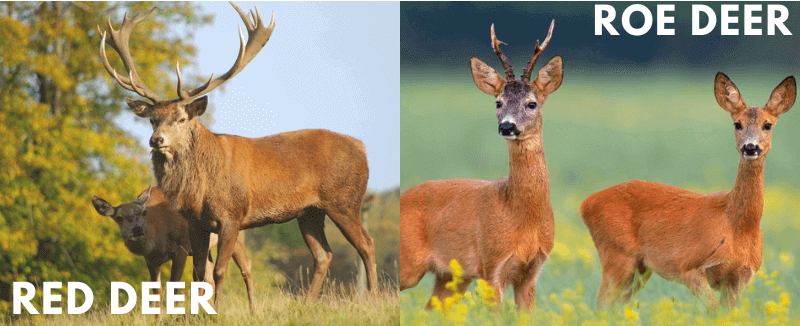
Red Deer: The red deer, native to Europe, Asia and North Africa, can manage speeds of up to 40 mph, putting them on par with the fastest whitetail deer. However, they generally cannot maintain these top speeds for extended periods.
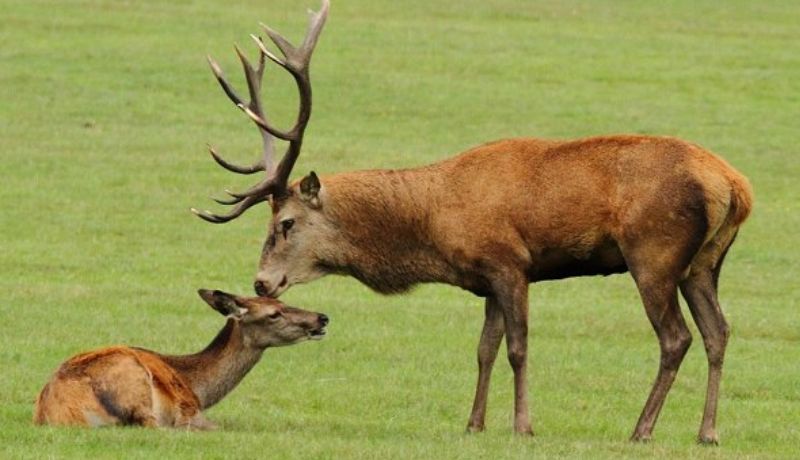
Roe Deer: The roe deer, a smaller species found across Europe and Asia, can reach speeds of 37 mph, almost matching the sprint speed of a whitetail deer. However, due to their smaller size, their endurance at these high speeds is usually less than that of the larger whitetail deer.
On the other end of the spectrum, the larger elk, also known as wapiti, can reach speeds of 45 mph, surpassing the whitetail deer. However, they also tend to tire quickly due to their larger mass, making their endurance running speeds lower than those of the whitetail deer.
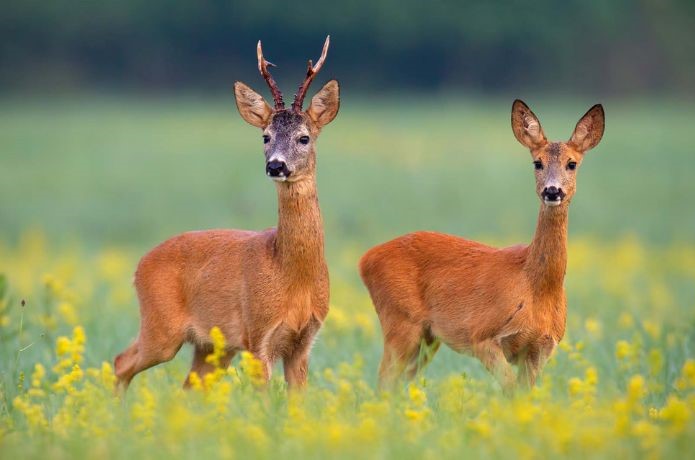
While whitetail deer may not be the absolute fastest among deer species, their sprinting abilities combined with their endurance make them one of nature’s most impressive runners.
Human Interaction and Deer Speed
Historically, hunting and other human activities have pushed deer to develop their sprinting abilities to evade predators. However, urbanization and habitat fragmentation have significantly impacted their running ability, as they must navigate through fragmented and unfamiliar environments increasingly.
What to Keep in Mind During Hunting Season or Encounters
If you ever encounter a whitetail deer, it’s essential to give them adequate space and not provoke them. While they are mostly timid creatures, cornered or startled deer might attempt to defend themselves. During hunting season, keep in mind their remarkable speed and adaptability to their environment. It’s important to stay vigilant and aware of their potential paths of escape.

Also , remember that whitetail deer are incredibly fast and maneuverable in their natural environment. During a hunt or an encounter, they can easily outrun humans due to their long strides and powerful hind legs. It’s best to give them plenty of space and time to move away from you without feeling threatened.
Overall, whitetail deer are one of nature’s most impressive sprinters and they deserve to be respected and given the space and freedom to move around safely. Understanding their anatomy, physiology and unique adaptations can help us appreciate these graceful creatures even more.
Conclusion:
Whitetail deer can run surprisingly fast and it’s important to keep this in mind when outdoors in any deer-later area. If you have been out scouting or if hunting season is drawing close, make sure you have studied the speed of whitetail deer by understanding their gaits and getting an idea of how far they can run.
With the knowledge of a whitetail’s speed capability, coupled with basic defensive strategies and skills like camouflage and concealment, any hunter should be ready for whatever the woods throw at them.
Above all else, never underestimate a whitetail’s top speed! Not only could it save your life one day, but it will continue to amaze and fascinate anyone lucky enough to witness a true sprint from these incredible animals.
